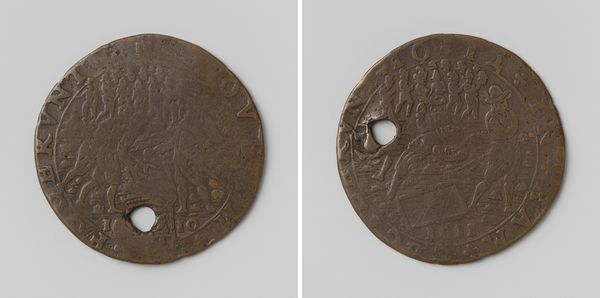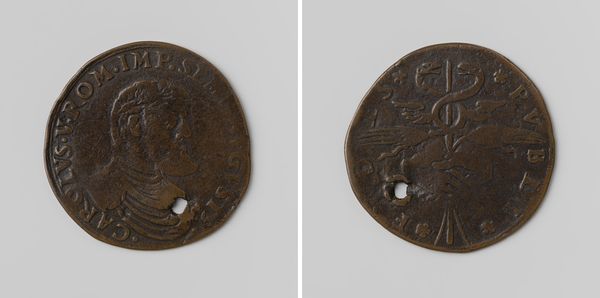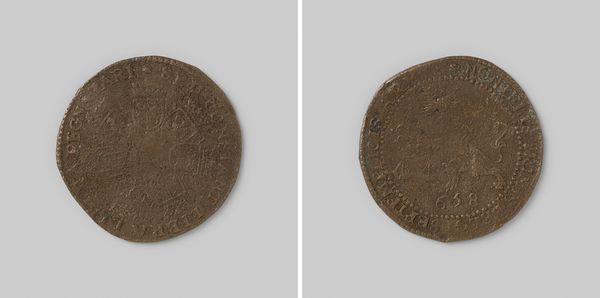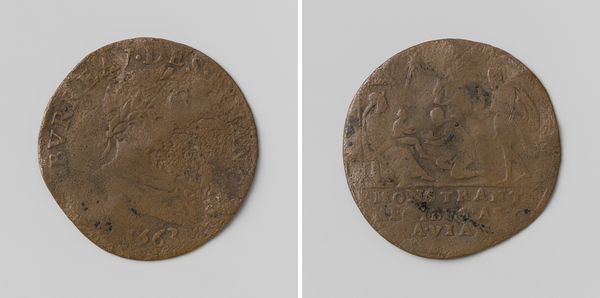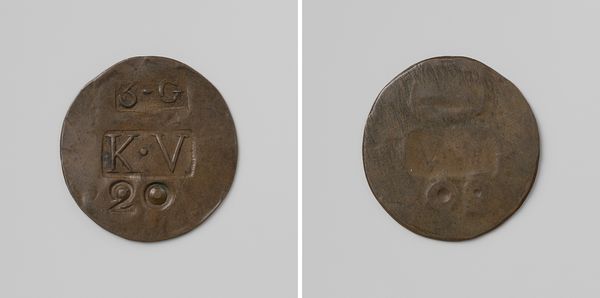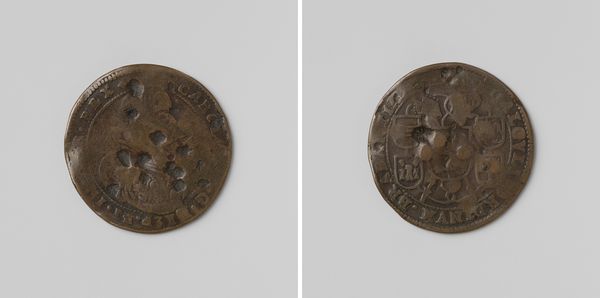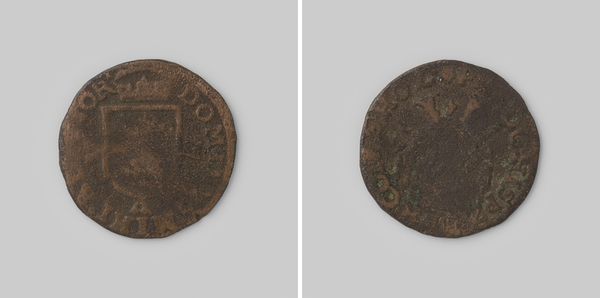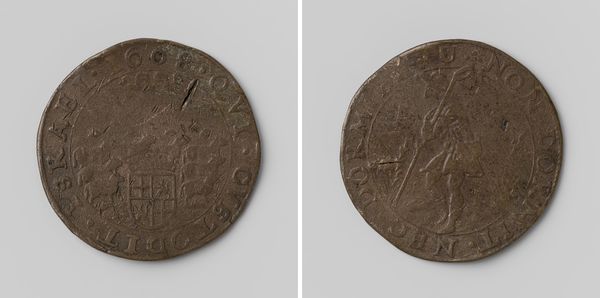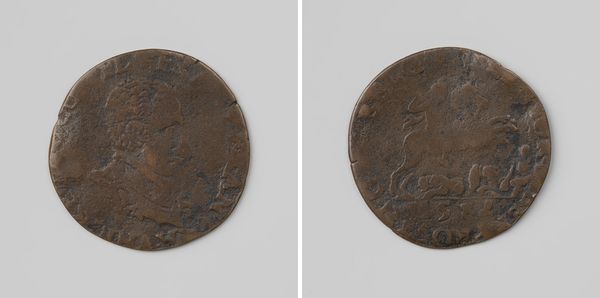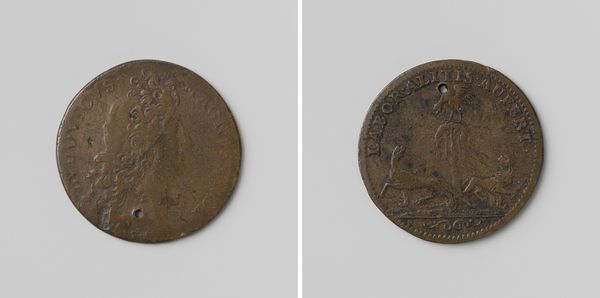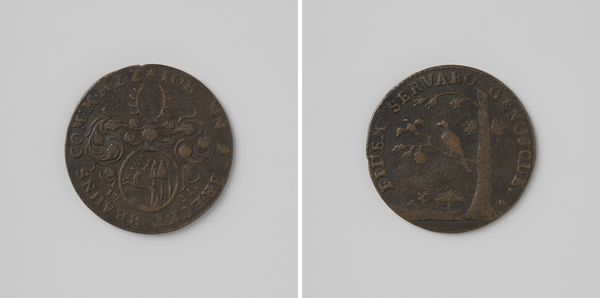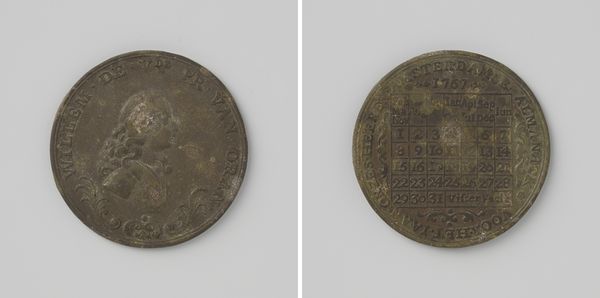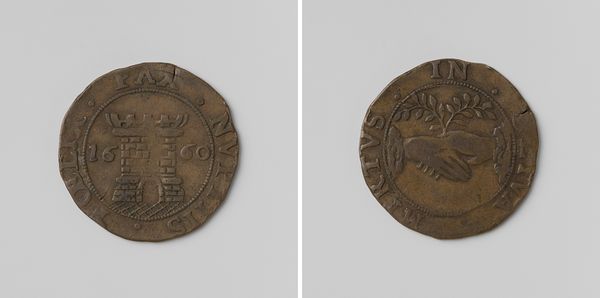
metal, bronze
#
portrait
#
metal
#
sculpture
#
bronze
#
11_renaissance
#
ceramic
Dimensions: diameter 2.7 cm, weight 4.72 gr
Copyright: Rijks Museum: Open Domain
Curator: Let's discuss this intriguing piece, "Ernst van Beieren, prins-bisschop van Luik," dating back to 1587. It's crafted from bronze. Editor: It looks like it has been worn smooth by use. Bronze tends to suggest permanence and authority, doesn't it? Yet there’s this almost organic, eroded quality to it. Plus, that hole—was it once jewelry? Curator: Exactly. The portrait and text demonstrate its function within societal structures, perhaps minted to portray power through this leader’s image as a portrait. The drilled hole suggests a later adaption and personal appropriation of political messaging by members of the community who physically wore that same currency and image. Editor: And this speaks to labor too, doesn't it? How was this piece originally produced? What processes shaped the metal? Did that labor reflect the ruler's image? Is that portrait life size? Was it idealized or meant to simply render a man into a metal image to ensure loyalty? Curator: I agree! The labor and material both support the politics and messaging in art, but perhaps beyond even just one piece itself. Here, for example, Ernst held significant religious and political sway, demonstrated through these types of objects and likeness being circulated. Editor: So this portrait originally served propaganda, right? Then later it was circulated among working hands and worn smooth until its current status here with that drilled hole for a totally repurposed role. The bronze still shines and reminds you of its quality from then even now. Curator: It is quite the metamorphosis when viewed this way. The item has clearly gone through many life stages, starting off as a way of displaying wealth, importance, or position, being altered through personal wear and tear. Editor: So ultimately we see labor in many phases of existence and repurposing from creation, wear, and value for us as historical viewers, right? Curator: Yes, both literal labor in production and the symbolic labor of image making and reshaping of socio-political importance are found through observing this unique bronze metal. Editor: Looking again at how worn it is gives me a final impression of both fragility and enduring worth.
Comments
No comments
Be the first to comment and join the conversation on the ultimate creative platform.
